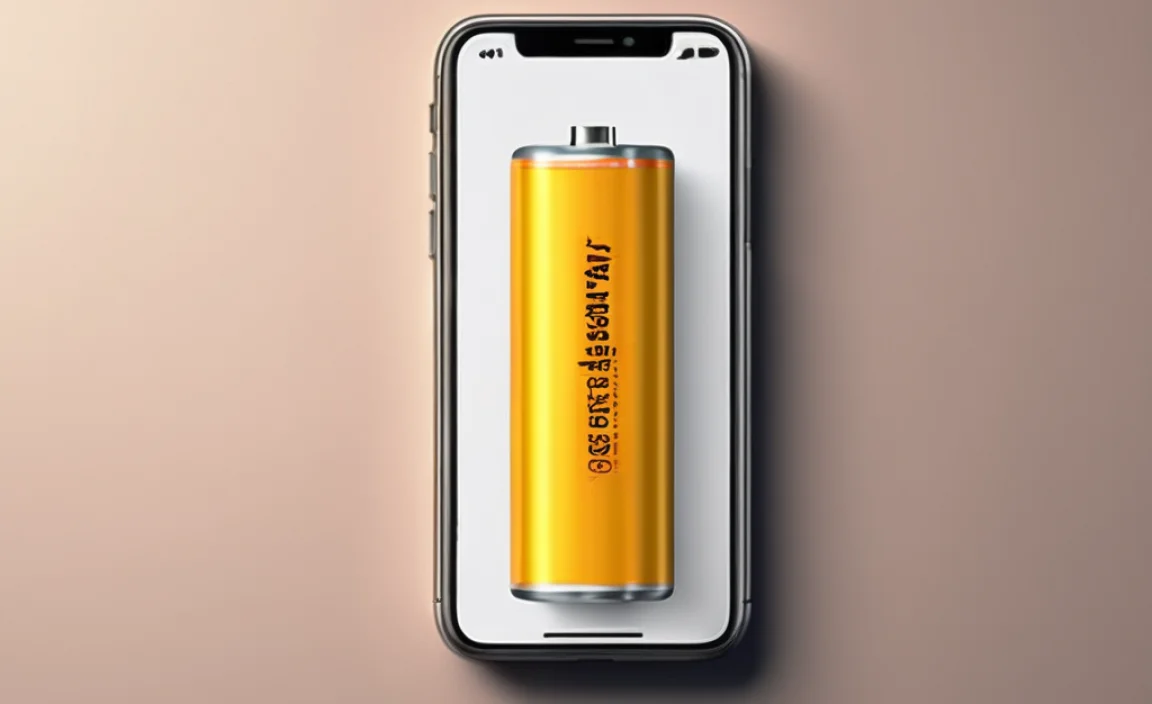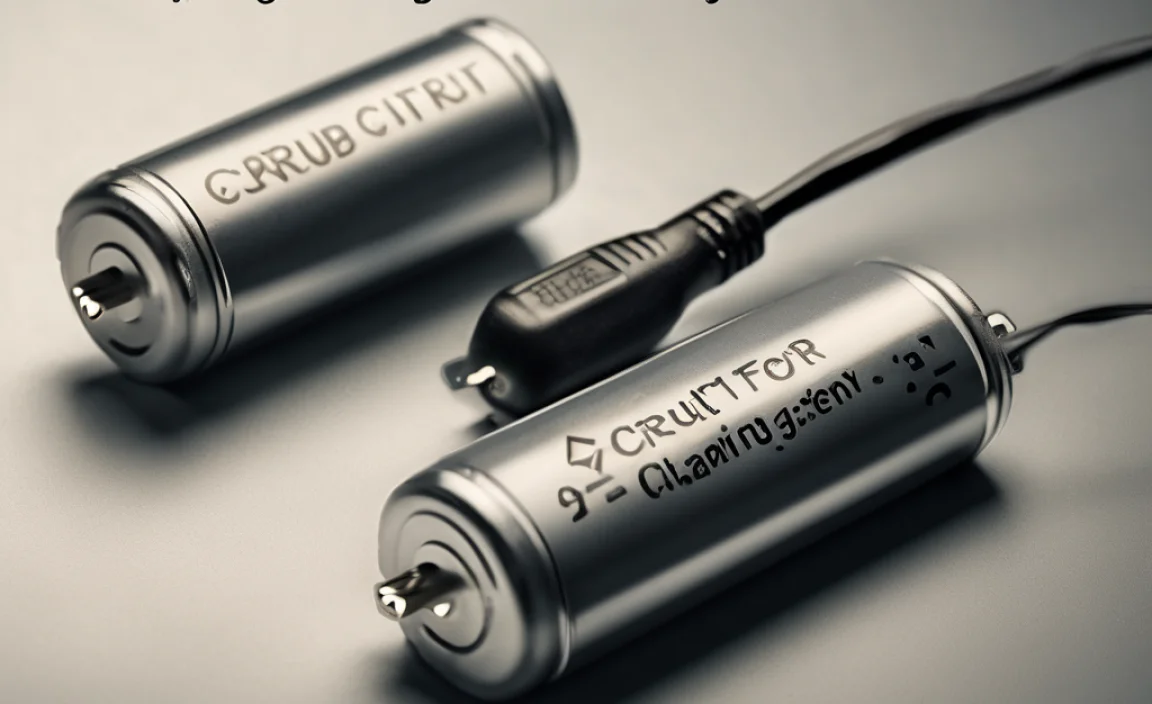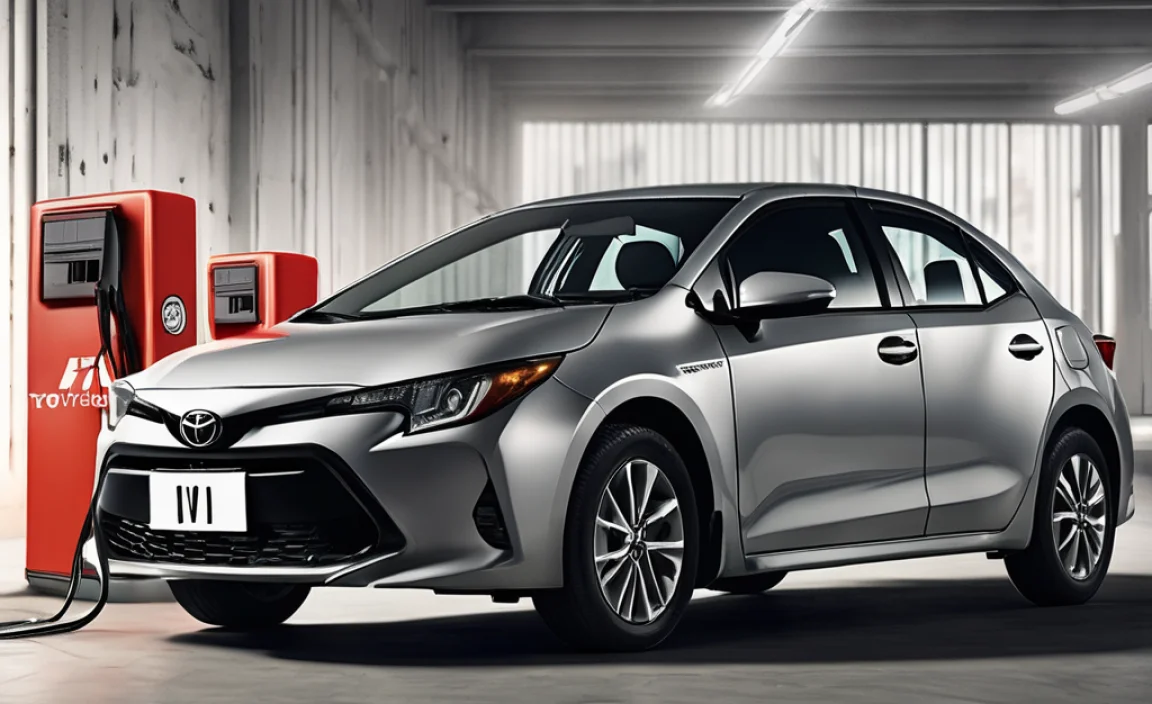Quick Summary: Understanding a battery chart for cars means easily finding the right replacement battery by matching key specifications like group size, CCA, and terminal type. This guide simplifies reading these charts, ensuring you pick a compatible and powerful battery for your vehicle with confidence and ease.
Ever stared at a wall of car batteries and felt completely lost? You’re not alone! Choosing the right car battery can seem confusing, with all sorts of numbers and codes. But knowing how to read a battery chart for cars is like having a secret map to the perfect power source for your vehicle. It ensures your car starts reliably, even on the coldest mornings, and keeps all its electrical parts humming along. We’ll break down what those charts mean, what information you need, and how to pick the best battery for your car in simple, step-by-step guidance. Let’s get your car powered up right!
What is a Car Battery Chart and Why You Need It
A car battery chart is essentially a helpful guide that lists different car battery models and their key specifications. Think of it like a menu at a restaurant, but for batteries. Instead of dishes, it shows you details like the battery’s size, its cranking power, and how its terminals are positioned.
Why is this so important? Because not all batteries are created equal! Your car is designed to work with a specific type and size of battery. Using the wrong one can lead to all sorts of problems, from a battery that doesn’t fit properly to one that can’t provide enough power to start your engine. A battery chart helps you avoid these headaches by making sure you select a battery that is:
- Compatible: It fits securely in your car’s battery tray.
- Powerful Enough: It can deliver the necessary cranking amps to start your engine, especially in cold weather.
- Correctly Configured: The battery terminals (where you connect the cables) are in the right place and orientation.
Finding the right battery ensures your car starts reliably every time and prevents potential damage to your electrical system. It’s a small step that makes a big difference in keeping your vehicle running smoothly.
Understanding the Key Information on a Battery Chart
When you look at a car battery chart, you’ll see several pieces of information that are crucial for making the right choice. Let’s break down the most common and important ones:
1. Battery Group Size
This is perhaps the most critical piece of information. The group size tells you the physical dimensions of the battery (height, width, and length) and the terminal placement. Batteries are grouped into standardized sizes, often designated by a number and sometimes a letter (e.g., Group 24, Group 35, Group 65). You can find your car’s required group size in your owner’s manual or by looking at the label on your current battery.
Most battery manufacturers use the Battery Council International (BCI) group size system. These sizes ensure that the battery will physically fit in your car’s battery compartment and that the power cables will reach the terminals without strain.
2. Cold Cranking Amps (CCA)
Cold Cranking Amps (CCA) measures how much power a battery can deliver for starting your engine in freezing temperatures. The rating indicates the number of amps a 12-volt battery can supply for 30 seconds at 0°F (-18°C) while maintaining a voltage above 7.2 volts. The higher the CCA rating, the better the battery is at starting your car in cold weather. Your car’s owner’s manual will specify the minimum CCA required for your vehicle. It’s often a good idea to choose a battery with a CCA rating that meets or slightly exceeds this minimum, especially if you live in a cold climate.
3. Reserve Capacity (RC)
Reserve Capacity (RC) tells you how long a fully charged battery can deliver a specific amount of amperage before its voltage drops below a usable level. It’s usually rated in minutes. For instance, a battery with an RC of 120 minutes can provide 25 amps for two hours at 80°F (27°C) before its voltage drops too low. This is important for powering your car’s accessories (like headlights, radio, and air conditioning) if the alternator isn’t working or if you’re stuck in traffic with the engine off.
4. Terminal Type and Layout
The terminals are the posts on the battery where you connect your car’s battery cables. They come in different types, most commonly:
- Top Post: The posts stick straight up from the top of the battery. This is the most common type.
- Side Post: The posts are smaller and located on the sides of the battery.
The layout also matters. The positive (+) and negative (-) terminals can be positioned on different sides of the battery to ensure the cables reach correctly. Battery charts will often indicate the terminal configuration, sometimes using schematic diagrams or codes. Always ensure the terminal type and layout match what your car needs to prevent installation issues and ensure safe connections.
5. Voltage
For standard passenger cars, this is almost always 12 volts. While you might see other voltages for specialized vehicles or deep-cycle batteries (like those used in RVs or boats), for a car battery, 12V is the standard. The chart will confirm this.
How to Read a Car Battery Chart: Step-by-Step
Navigating a battery chart is straightforward when you know what to look for. Follow these steps to find the perfect battery for your car:
Step 1: Find Your Car’s Battery Requirements
Before you even look at a chart, you need to know what your car needs. The best sources are:
- Owner’s Manual: This is your best friend. It will specify the exact battery group size and often the minimum CCA required.
- Current Battery: Look at the label on your existing battery. It usually clearly states the group size (e.g., “Group 35”).
- Online Resources: Many auto parts stores have online tools where you enter your car’s make, model, and year to find compatible batteries. You can then cross-reference this information with a general battery chart.
Knowing your car’s Make, Model, Year, and Engine Size is essential for these lookups.
Step 2: Locate Your Group Size on the Chart
Once you have your required group size (e.g., Group 24F), find that specific group in the battery chart. The chart will typically be organized with group sizes listed in a column. You’ll then look across that row for the specifications related to batteries of that size.
Step 3: Check the CCA and Reserve Capacity
In the row corresponding to your group size, find the columns for Cold Cranking Amps (CCA) and Reserve Capacity (RC). Compare the values listed for different battery models or brands. Ensure the CCA rating meets or exceeds your car’s minimum requirement. For RC, a higher number is generally better, but matching or slightly exceeding the manufacturer’s recommendation is usually sufficient.
Step 4: Verify Terminal Type and Layout
Look for information regarding the terminal type (top post, side post) and layout (positive and negative post orientation). The chart may show small diagrams. Make sure this matches your existing battery’s configuration and what your car’s cables can reach. For example, a “24F” group size typically has a different terminal layout than a “24” group size; the “F” often indicates that the positive terminal is on the left when looking at the battery from the front with terminals facing you.
Step 5: Compare Brands and Features
Once you’ve identified batteries that meet your car’s technical requirements, you can then compare different brands based on:
- Warranty: Longer warranties (e.g., free replacement period, pro-rated period) usually indicate better quality and manufacturer confidence.
- Price: Battery prices can vary significantly. Find a balance between cost and expected lifespan/performance.
- Technology: Some batteries use specialized technologies like AGM (Absorbent Glass Mat) which are more durable, vibration-resistant, and often recommend for vehicles with start-stop technology or high electrical demands. These might be more expensive but offer superior performance.
Sample Battery Chart Structure
Here’s an example of how a simplified car battery chart might look. Real charts from manufacturers or retailers will be more detailed and include many more models.
| BCI Group Size | Dimensions (Inches-L x W x H) | CCA (at 0°F) | RC (at 80°F) | Terminal Type | Terminal Layout | Common Vehicle Applications |
|---|---|---|---|---|---|---|
| 24 | 10.2 x 6.6 x 9.0 | 550-750 | 100-150 min | Top Post | Positive Left | Many Japanese and American sedans, minivans |
| 24F | 10.2 x 6.6 x 9.0 | 550-750 | 100-150 min | Top Post | Positive Right | Some Japanese sedans, SUVs |
| 35 | 9.1 x 6.9 x 8.9 | 500-650 | 90-130 min | Top Post | Positive Right | Many Japanese cars, some European cars (e.g., Honda, Toyota, Subaru) |
| 65 | 12.9 x 6.8 x 7.5 | 650-850 | 120-180 min | Top Post | Positive Left | Many larger American sedans, SUVs, light trucks (e.g., Ford F-150) |
| 75 | 10.3 x 7.0 x 6.9 | 500-700 | 90-130 min | Top Post | Positive Right (recessed) | GM vehicles, some older Ford/Chrysler vehicles |
| 34R | 10.3 x 7.0 x 7.9 | 600-800 | 100-140 min | Top Post | Positive Right | Some GM, European cars (e.g., Cadillac, some European models) |
Note: This is a simplified table for illustration. Actual battery charts will contain many more group sizes and specific model variations. Always consult your vehicle’s owner’s manual for exact specifications.
When to Replace Your Car Battery
Car batteries don’t last forever. On average, a car battery lasts about 3 to 5 years. Several signs can indicate that your battery is nearing the end of its life or has already failed:
- Slow Engine Crank: When you turn the key, the engine turns over slower than usual. This is a classic sign of a weakening battery.
- Clicking Noise When Starting: If you hear a rapid clicking sound but the engine doesn’t start, the battery might not have enough power to engage the starter motor.
- Dim Headlights or Interior Lights: If your lights seem dimmer than usual, especially when the engine is off or at idle, the battery is probably weak.
- Electrical Issues: Problems with your car’s radio, power windows, or other electrical components can sometimes be linked to a failing battery.
- Warning Light: Many modern cars have a battery warning light on the dashboard that illuminates when there’s a charging system issue or the battery is low.
- Swollen Battery Case: Extreme heat or overcharging can cause the battery case to swell or bulge. This is a serious issue, and the battery should be replaced immediately.
- Foul Smell: A rotten egg smell coming from under the hood can indicate that the battery is leaking or has been damaged.
- Age: If your battery is over five years old, regardless of its performance, it’s wise to have it tested and consider replacement.
See this guide from the National Highway Traffic Safety Administration (NHTSA) for more general vehicle safety information.
Choosing the Right Battery: Key Considerations
Beyond just matching the group size, a few other factors are worth considering when selecting a replacement battery:
1. Climate
If you live in a very cold climate, a higher CCA rating is essential. For hot climates, battery life can be shortened by heat, so a robust construction and a good warranty might be more important. Extreme temperatures put more stress on a battery.
2. Vehicle Features
Modern cars often have more power-hungry electronics, such as navigation systems, multiple charging ports, heated seats, and advanced driver-assistance systems. If your car has a lot of these features, you might benefit from a battery with a higher Reserve Capacity and CCA rating. Vehicles with start-stop technology (where the engine shuts off at idle and restarts automatically) often require special AGM batteries, which are more resilient to repeated deep discharges and rapid starts.
3. Battery Type: Standard vs. AGM
- Flooded Lead-Acid Batteries: These are the most common and generally the most affordable type. They contain liquid electrolyte. They work well for most standard vehicles.
- AGM (Absorbent Glass Mat) Batteries: These are more expensive but offer significant advantages. The electrolyte is absorbed in fiberglass mats, making them spill-proof, vibration-resistant, and capable of handling more charge/discharge cycles. They are crucial for vehicles with start-stop systems, high electrical demands, and are often recommended for luxury vehicles. If your car originally came with an AGM battery, it’s usually best to replace it with another AGM battery of the same group size.
Your owner’s manual or the battery chart will specify if your vehicle requires an AGM battery.
4. Warranty
Look closely at the warranty offered. A typical warranty for a car battery might include a free replacement period (e.g., 2-3 years) and a pro-rated period (where you get a discount on a new battery based on how long you’ve owned the old one). A longer free replacement period is generally a good indicator of battery quality.
5. Brand Reputation
Some brands have a long-standing reputation for reliability. While you can find good batteries from less-known brands, sticking with established names often provides peace of mind. Check reviews and ask for recommendations if you’re unsure.
The Battery Replacement Process (Brief Overview)
While this guide focuses on choosing the right battery using a chart, here’s a general idea of what replacing a car battery involves. It’s often a DIY-friendly task if you’re comfortable working on your car, but always prioritize safety.
Tools You Might Need:
- Wrench set or socket set (typically 10mm and 13mm are common for battery terminals and hold-downs)
- Battery terminal cleaner or wire brush
- Gloves and safety glasses
- Anti-corrosion spray or paste (optional)
- Memory saver (optional, to maintain vehicle settings like radio presets)
General Steps:
- Safety First: Ensure the engine is off and the car is in park or in gear. Wear safety glasses and gloves.
- Locate the Battery: It’s usually under the hood, but sometimes in the trunk or under a seat.
- Disconnect Cables: ALWAYS disconnect the negative (-) terminal first using your wrench. Then, disconnect the positive (+) terminal. This order prevents accidental short circuits.
- Remove Hold-Down Clamp: Batteries are secured by a clamp at the base or top. Remove this.
- Lift Out Old Battery: Batteries are heavy! Lift it straight up and out, being careful not to spill any acid.
- Clean Terminals: Use a wire brush or terminal cleaner to clean the inside of the cable clamps and the battery tray if needed.
- Install New Battery: Carefully place the new battery in the tray, ensuring it’s oriented correctly for terminal access.
- Secure Battery: Reinstall the hold-down clamp.
- Connect Cables: Connect the positive (+) terminal first, then the negative (-) terminal. Tighten them securely. Apply anti-corrosion spray if desired.
- Start Car: Test that the car starts and all electrical components work correctly.
- Dispose of Old Battery: Old car batteries are hazardous waste. Most



